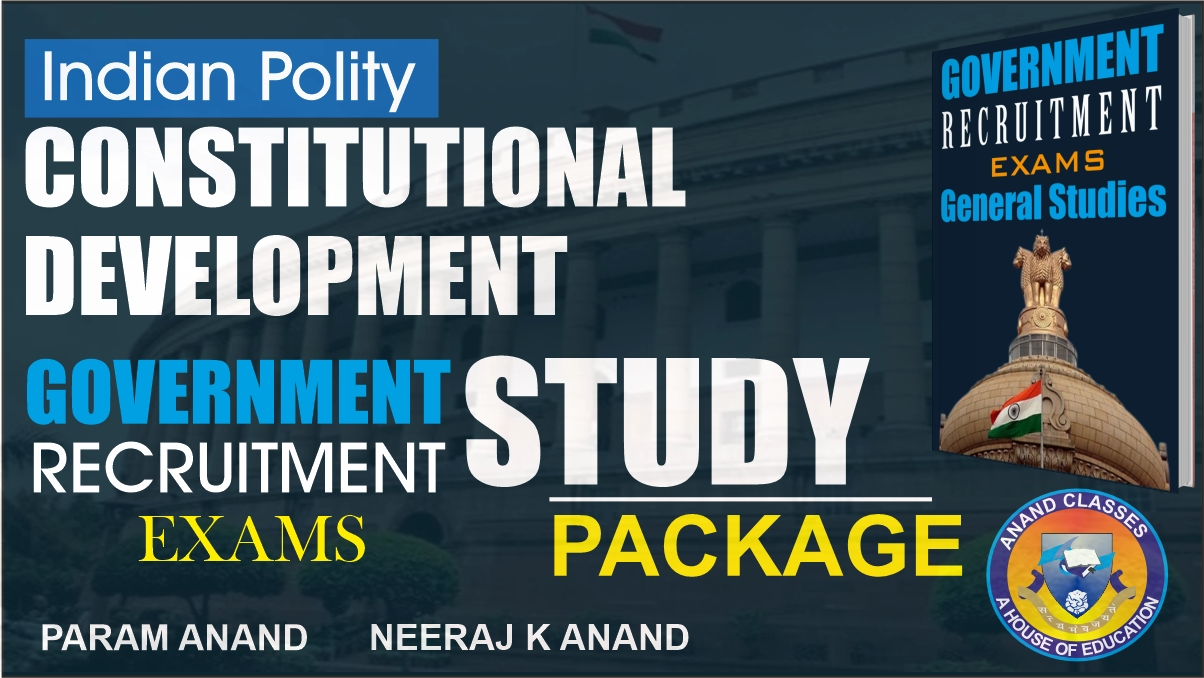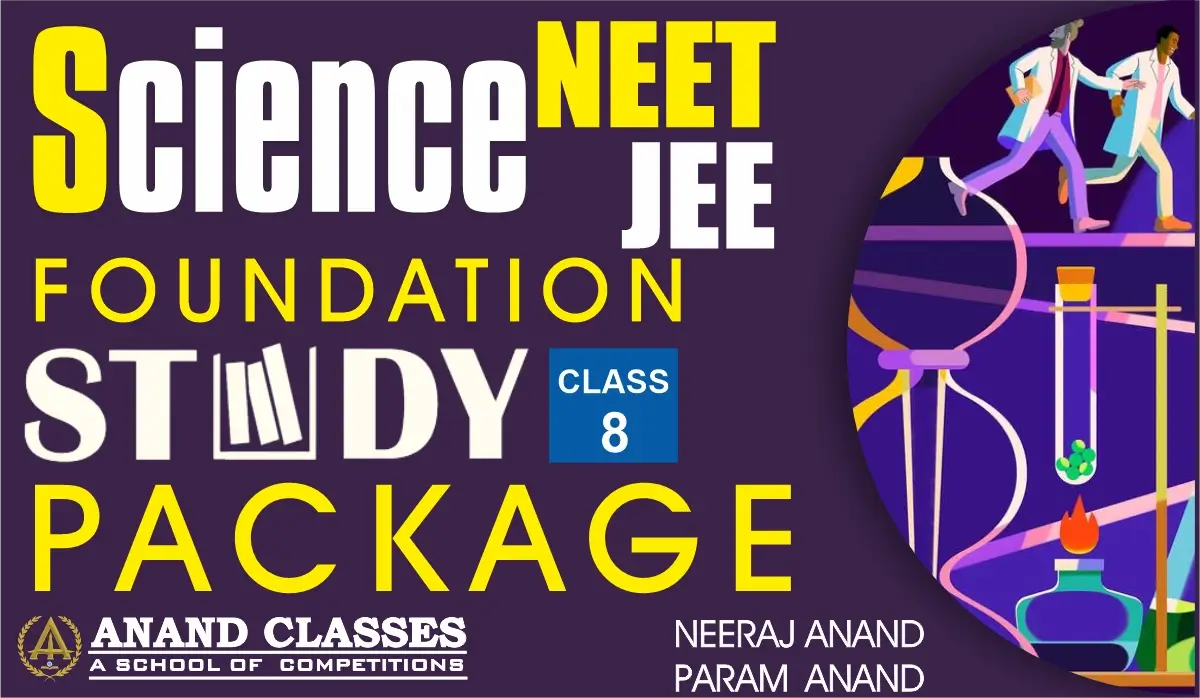NIRMAL ANAND Educations
Published by: Anand Technical Publishers
Written by: Neeraj Anand
Under: Anand Classes
Contact: +91 9463138669
Email: anandclasses1996@gmail.com
Buy Complete Study Material at: Anand Classes Publishers
PARTS OF THE INDIAN CONSTITUTION
There are 25 parts in the Indian Constitution, each dealing with a different aspect of governance. Below is a breakdown of these parts:
1. Part-I (Articles 1-4)
- Deals with the territory of India, formation of new states, and changes to existing state names and boundaries.
📌 Related Posts:
Schedules in Indian Constitution|NDA,CDS,UPSC,AFCAT,RRB,IBPS-PO,SSC,KVS,CLAT Exams Notes
|
Preamble of Indian Constitution|NDA,CDS,UPSC,AFCAT,RRB,IBPS-PO,SSC,KVS,CLAT,MCQs,Notes
|
Fundamental Rights (Part III)–Important Features | NDA,CDS,UPSC,AFCAT,RRB,IBPS-PO,SSC,KVS,CLAT Exams Notes
|
Termination of Citizenship|NDA,CDS,UPSC,AFCAT,RRB,IBPS-PO,SSC,KVS,CLAT Exams Notes
|
Interrogative Negative Sentences | Explain in Hindi | NDA, CDS, UPSC, AFCAT, RRB, IBPS-PO, SSC, KVS, CLAT Exams
2. Part-II (Articles 5-11)
- Provisions related to citizenship.
3. Part-III (Articles 12-35)
- Covers Fundamental Rights of Indian citizens.
4. Part-IV (Articles 36-51)
- Discusses Directive Principles of State Policy.
5. Part-IV A (Article 51A)
- Added by the 42nd Amendment in 1976.
- Contains the Fundamental Duties of citizens.
6. Part-V (Articles 52-151)
- Deals with the Union Government (Duties of Prime Minister, Ministers, President, Vice-President, Attorney General, Parliament, CAG).
7. Part-VI (Articles 152-237)
- Discusses State Government (Duties of Chief Minister, Governor, State Legislature, High Court, Advocate General).
8. Part-VII (Article 238)
- Related to states in Part B, repealed by the 7th Amendment in 1956.
9. Part-VIII (Articles 239-241)
- Deals with Union Territories.
10. Part-IX (Articles 243-243O) & Part-IX A (Articles 243P-243ZG)
- Added by the 73rd and 74th Amendments in 1992.
- Covers Panchayati Raj and Municipalities.
11. Part-IX B (243ZH-243ZT)
- Deals with Cooperative Societies.
12. Part-X (Articles 244-244A)
- Covers Scheduled and Tribal Areas.
13. Part-XI (Articles 245-263)
- Describes the relationship between the Union and the States.
14. Part-XII (Articles 264-300A)
- Deals with financial matters, including revenue distribution and the Finance Commission.
15. Part-XIII (Articles 301-307)
- Concerns Trade, Commerce, and Intercourse within India.
16. Part-XIV (Articles 308-323)
- Covers Civil Services and Public Service Commissions.
17. Part-XIV A (Articles 323A, 323B)
- Discusses Tribunals.
18. Part-XV (Articles 324-329A)
- Covers Elections, including the Election Commission.
19. Part-XVI (Articles 330-342)
- Deals with special provisions for SCs, STs, and Anglo-Indian Representation.
20. Part-XVII (Articles 343-351)
- Relates to the Official Language.
21. Part-XVIII (Articles 352-360)
- Discusses Emergency Provisions.
22. Part-XIX (Articles 361-367)
- Contains miscellaneous provisions.
23. Part-XX (Article 368)
- Covers the Amendment of the Constitution.
24. Part-XXI (Articles 369-392)
- Contains Temporary, Transitional, and Special Provisions.
25. Part-XXII (Articles 393-395)
- Deals with the short title, commencement, authoritative text in Hindi, and repeal provisions.
FAQs
Q1: How many parts are there in the Indian Constitution?
A: There are 25 parts in the Indian Constitution.
Q2: What is the significance of Part-III of the Constitution?
A: Part-III deals with Fundamental Rights, which guarantee essential rights to Indian citizens.
Q3: What is covered under Part-IV A?
A: Part-IV A, added by the 42nd Amendment in 1976, outlines the Fundamental Duties of citizens.
Q4: Which part of the Constitution discusses Emergency Provisions?
A: Part-XVIII (Articles 352-360) covers Emergency Provisions.
Q5: Which part relates to the Panchayati Raj System?
A: Part-IX (Articles 243-243O) and Part-IX A (Articles 243P-243ZG) cover the Panchayati Raj and Municipalities.
MCQs on Parts of the Constitution
Q1: Which part of the Constitution deals with Fundamental Rights?
A) Part-II
B) Part-III
C) Part-IV
D) Part-V
Correct Answer: B) Part-III
Explanation: Part-III (Articles 12-35) contains the Fundamental Rights of Indian citizens.
Q2: Which amendment added the Fundamental Duties to the Constitution?
A) 42nd Amendment
B) 44th Amendment
C) 73rd Amendment
D) 86th Amendment
Correct Answer: A) 42nd Amendment
Explanation: The 42nd Amendment in 1976 introduced Fundamental Duties under Part-IV A.
Q3: The Finance Commission is mentioned in which part of the Constitution?
A) Part-XII
B) Part-XIV
C) Part-XI
D) Part-X
Correct Answer: A) Part-XII
Explanation: Part-XII (Articles 264-300A) includes provisions for revenue distribution and the Finance Commission (Article 280).
Q4: The Election Commission is mentioned under which part of the Constitution?
A) Part-XIV
B) Part-XV
C) Part-XVI
D) Part-XVII
Correct Answer: B) Part-XV
Explanation: Part-XV (Articles 324-329A) deals with Elections, including the Election Commission.
For complete study material and in-depth preparation for NDA, CDS, UPSC, AFCAT, RRB, IBPS-PO, SSC, KVS, and CLAT Exams, visit:
👉 Buy Now




